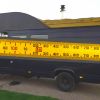Why Are Most Trucks Rear Wheel Drive?
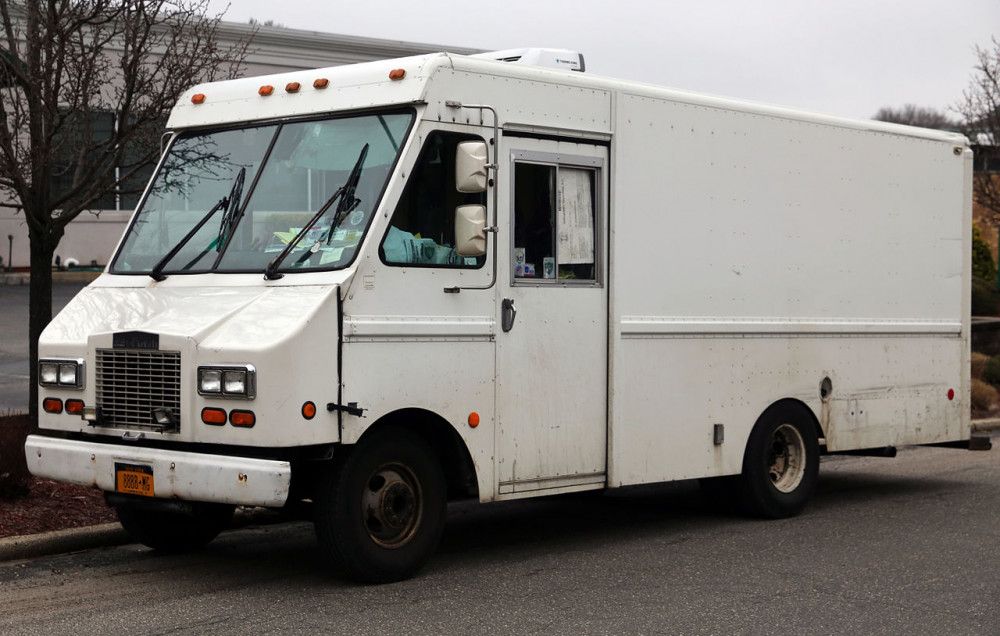
Have you ever wondered why so many vans use rear wheel drive instead of front wheel drive? And how it affects your vans dimensions? Well, I have. And in this article I'll answer the question for you.
The bottom line is: manufacturers use rear wheel drive for better towing capacity, meaning more traction and better handling when the van is loaded. Generally, rear wheel drive is better when you plan on loading up your van.
But it's not as simple as that. Whether rear wheel drive is for you depends on your wishes, and how you're going to use your van.
Are all vans rear wheel drive?
Not all vans have RWD. Most of the vans used to be RWD though. In fact, most of the cars in general were. But in the last decade more and more vans come with FWD, or you can choose between a FWD or RWD version. This is why it's important to understand the difference between FWD and RWD, and how it affects your vans handling and properties.
But before I start throwing around all kinds of mechanical terms, first let's get the basics down. How does a car move, anyways?
How is a car powered, anyways?
A car is powered by its engine. The engine burns fuel, generating power. This power needs to be transmitted to the wheels to make them spin. This is where the driveshaft comes in. It transfers the power of the engine to the wheels, generating motion, making the car move forward.
There are three primarily three ways to power a car:
-
Front wheel drive (FWD) - The drive system transfers the power of the engine to the front wheels.
-
Rear wheel drive (RWD) - The drive system transfers the power of the engine to the rear wheels.
-
All wheel drive (AWD or 4x4) - The drive system transfers the power of the engine to all wheels.
So what is rear wheel drive?
Rear wheel drive is when the power of the engine is transmitted to the rear wheels of the car, and the rear wheels drive the car.
Most rear wheel drives have the engine in the front, and the driveshaft runs under the vehicle to the rear wheels.
Throughout the 20th century most car manufacturers used this drive system. It makes a lot of sense: the front wheels are tasked with steering, and the back wheels are tasked with driving the car. This means they won't interfere with each other.
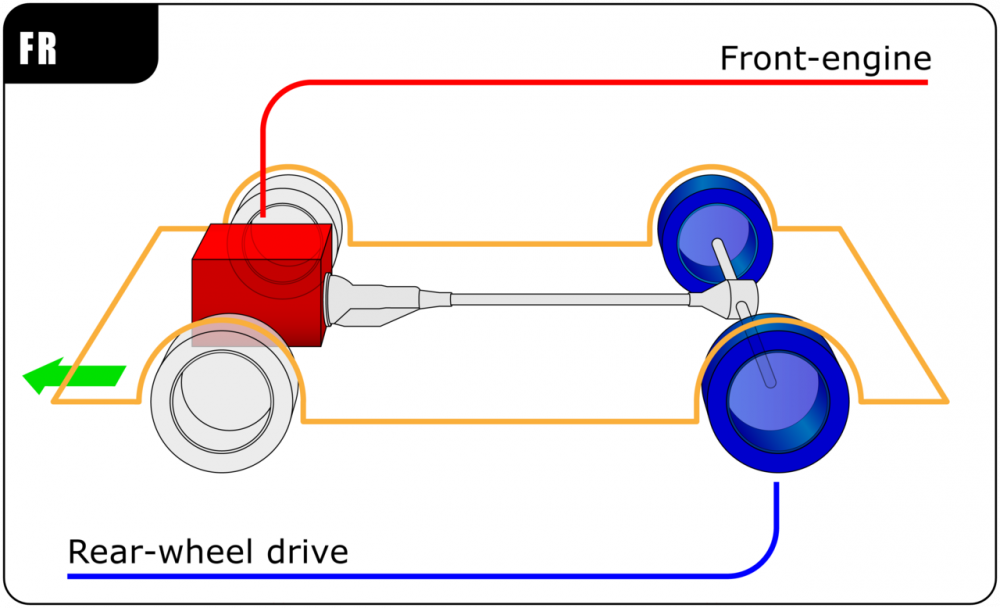
What vehicles use rear wheel drive?
A good rule of thumb is: the heavier the vehicle, the greater the chance it uses RWD.
- Most commercial vans (hey, that's us!), semi-truck, and trucks use rear wheel drive.
- SUVs and MPVs. RWD handles the additional weight effortlessly.
- Sports cars. If you need high performance, rear wheel drive is the way to go.
- RVs. Most RVs weigh over 3000kg easily, making RWD the better option.
- Motorcycles
What's a drivetrain?
But how exactly does power run from the front of the van (where the engine is), to the back of the van? To understand this, we need to understand the drivetrain.
Beware: a lot of technical terms coming up. Want to go deep? Read on. Otherwise just skip this drivetrain bit. No worries, I understand.
The drivetrain is the group of parts that transfer power from the engine to the wheels of the van. It consists of the clutch, gearbox, driveshaft, differential, and ends at the (rear) wheels.
-
When the engine burns fuel in the cylinder, it pushes the pistons. The pistons in turn spin the crankshaft.
-
The crankshaft is mounted onto the transmission. Inside the transmission, this rotary energy is converted into different gear ratios.
-
The transmission uses this energy to spin the driveshaft. It's the crucial link between the transmission and the differential.
-
The differential sends out the energy of the driveshaft to the wheels. Most differentials use gears to deliver the right amount to each wheel. If both wheels rotate at exactly the same speed while driving around a corner, you won't have a lot of traction.
-
The differential ends in axles, which rotate the wheels.
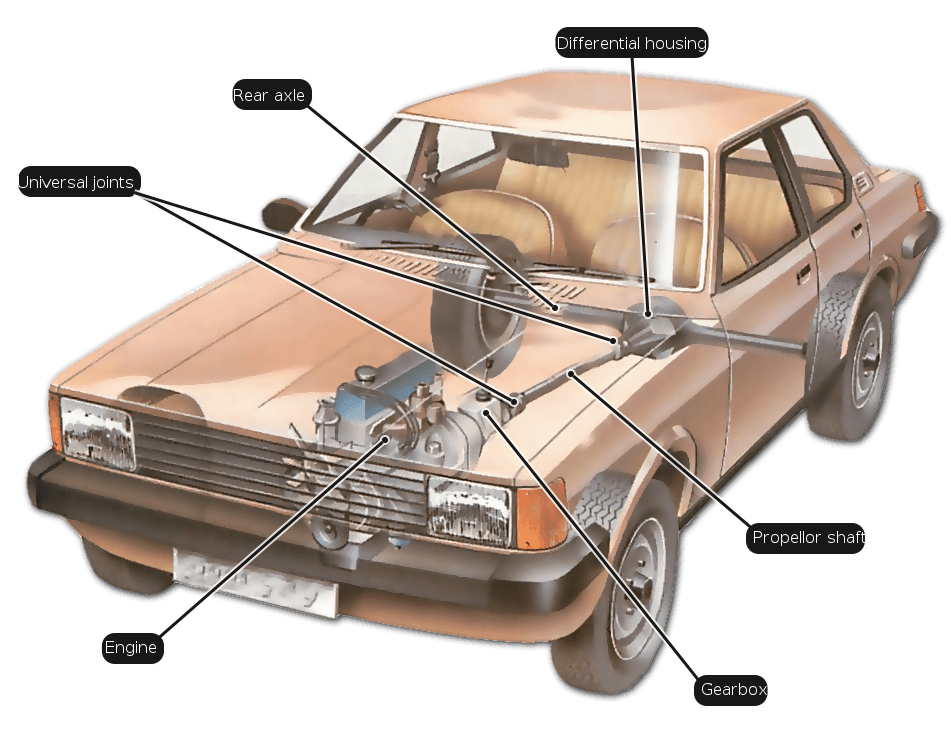
Why does it matter how a van is powered?
Great, we know how a car is powered. I hear you wondering: why does it matter how my van is powered? Great question. And I have a great answer for you. The drive system of the car affects most of its properties. How well does it handle in different conditions? How much towing capacity does it have? And, perhaps most importantly: it determines the dimensions of the load area.
What are the advantages of rear wheel drive?
Rear wheel drive definitely has one thing going for it:
It's better at towing stuff. This means that if you plan to load the vehicle heavily, rear wheel drive is better most of the times. That's why most cargo vans and trucks use rear wheel drive instead of front wheel drive. It also handles better when towing.
Also, it provides better handling. The weight of the driveshaft is spread across the entire length car. So there's a better weight balance with RWD vans. The steering is more predictable in low traction conditions (ie. in snow or on gravel).
No torque steer. In FWDs the front wheels handle both the steering and the powering of the vehicle. This can result in torque steer, meaning the influence of the engine torque on the steering. FWDs can pull to one side when you're accelerating heavily.
Better turning radius. The drive shaft joints are less complex, allowing you to turn them further than with front wheel drive, giving you a smaller steering radius.
They're also easier to maintain. FWDs cramp a lot of parts into a tight space, meaning you need to disassemble more components to reach the parts you're doing maintenance on. This can definitely be a pain in the butt. RWD is mechanically simpler and everything is just easier to reach.
Because of this, the driveshaft parts have more room and are mostly larger, making them more durable.
Generally, rear wheel drive is the better option for heavy duty applications and intensive use than FWD.
Why does RDW provide more towing capacity?
How does traction work?
Traction is the grip of a tire on the road. The amount of traction is determined by the amount of weight on the wheels, in combination with the amount of power send through those wheels. The more weight on the wheels, the more traction it has.
A good rule of thumb is that the most heavily loaded wheels should power the car.
So why is RWD better for towing?
Whenever you tow trailers around, the weight of the trailer is put almost entirely on the rear wheels. Since you get better traction with more weight, rear wheel drive offers the best towing capacity.
Are there disadvantages to RWD?
But FWD isn't all bad. In fact, it has some clear advantages over rear wheel drive. Yes, you heard me. RWD does have some disadvantages.
The driveshaft is longer, making it heavier than FWD. This means higher fuel consumption and less available payload. It also offers less load volume.
Front wheel drive vans are lighter than RWDs. The driveshaft is much shorter, reducing the overall weight of the vehicle. So a FWD offers better mileage per gallon. And it also offers better payload, since the driveshaft isn't eating away at it.
Also, RWD requires some load for good traction. Since the rear wheels power the car, traction gets better when the rear axles is loaded. Rear wheel drive only makes sense if you load up the van. When unladen, rear wheel drive doesn't offer as much traction as front wheel drive.
If you're driving around in an empty van most of the time, you should definitely consider a front wheel drive version. FWD vans offer better traction when unladen.
RDWs are more expensive than FWDs. The price difference for panel vans is around $1,200.
What does RWD mean for the dimensions of the van?
Rear wheel drive requires the driveshaft to run underneath the load area of the van. This means a couple of things for the dimensions of the van:
- RWDs have a smaller load volume - The load bed of an RWD van is much higher than that of a front wheel drive. This means you'll lose quite a bit of load volume with a rear wheel drive.
- RWDs have a smaller floor surface - On top of that, RDW often come with double rear wheels. Because of this the wheel arches are bigger. This can eat into the load volume as well.
- RWDs have higher load height - This can be annoying if you're loading and unloading your van throughout the work day.
Generally a RWD has:
- up to 10cm (or 4") lower interior height
- up to 0.75m3 (ft3) less load volume
- and - with double wheels - up to 0.3m2 (26ft2) less floor surface than a FWD.
Is RWD bad in winter?
RWD has somewhat of a bad rep when it comes to snow. But it's not as bad as you might think.
Generally, FWD offers better traction in snow. But this applies mostly to passenger cars, while a rear wheel drive truck could be exactly what you want. Still, RWD isn't recommended for icy climates. So why is that?
In low traction conditions, having the car being pulled (FWD) is easier to manage than having the car being pushed (RWD).
The biggest problem is the extra weight of the drivetrain. A heavier vehicle gets stuck more easily.
Also, FWD cars have the weight directly above the driving wheels (at the front). This helps to get traction (remember), reducing wheel spin and increasing your chances of not getting stuck. But there's a simple solution: if you get stuck in the snow with a RWD, simply load up the rear axle until the rear wheels have enough traction to free themselves.
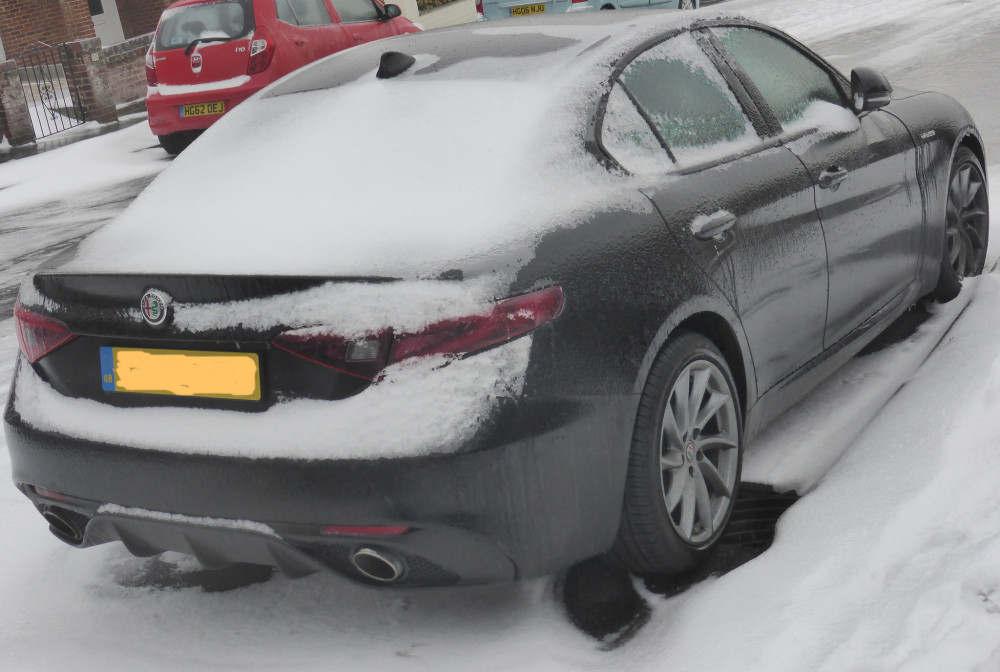
How to choose which one is the best for you?
So we now know quite a lot about the different drive systems. How to choose which one is the best for you? Consider these five things:
- Am I going to tow a lot of stuff? - If the answer is yes, you're probably better of with RWD.
- I'm planning a camper van conversion - If you're planning a camper van conversion in wood, you're most definitely going to max out on payload. RDW is for you. But do keep in mind that these vans are a bit tighter, so you lose on the available space for your conversion. If you plan on using a light weight material for your racking you can consider a FWD to gain some space.
- I'm a parcel deliverer handling light weight products - If you load and unload your van constantly, and your packages aren't very heavy, you might want the lower FWD model with the better MPG.
- Am I going to maintain the car myself? - If so, RDW makes your life so much easier.
- Am I going to drive around in the rain, the snow, or the mud most of the time? - RDW isn't the best for wet and icy conditions, so a FWD could be the better pick here.
- What do I need more: payload or space? - If the answer is payload, go with the RWD. It handles better with heavy loads. If the answer is space, go with the FWD.
Did you find the answer to your specific question?
👍 31 👎 2
Are you looking for the dimensions of your van?
